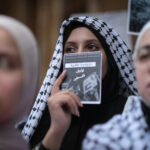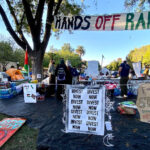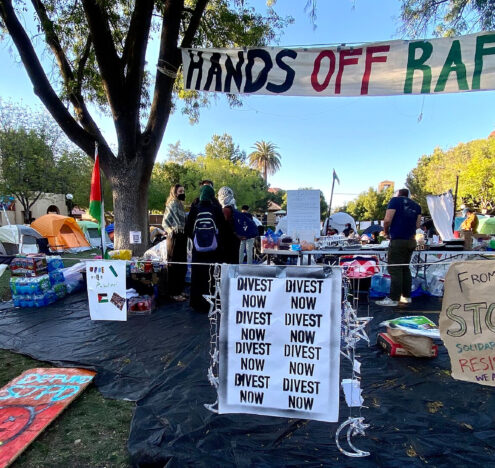President Joe Biden, under pressure from Ukraine and a minority of US-elected political leaders, is considering exporting cluster munitions to Ukraine to be deployed in the conflict against Russia. Yet, cluster munitions are banned by international convention.
I’ve experienced their horror firsthand.
The Inhumane Weapon
On Aug. 16, 1968, I was awakened at 0300 hours (3 am) by the familiar roar of battle, the violent, murderous din of armed combat. I had been sleeping in a sandbagged bunker at the 25th Infantry Division base camp in Tay Ninh Province about ten kilometers from Fire Support Base (FSB) Buell. Although I was not immediately threatened, I recognized the action was occurring a few kilometers north of my position in the Republic of South Vietnam. The moonless night sky near Nui Ba Den, the Black Virgin Mountain, was illuminated by the eerie glow of parachute flares deployed by American defenders of FSB Buell, a US Army 105mm artillery base. The roar of combat was unmistakable.
A surge of dread swept over me. A pitched battle between elements of the North Vietnamese Army and the defenders of a US Army installation in the republic of South Vietnam was underway. These murderous sounds were familiar to me. I knew that many deaths and injuries — theirs and ours — would soon result.
The battalion commander and I, together with a small security detachment of US soldiers, walked the base perimeter after the battle had ended. What we saw begged rationalization.
The American/Vietnam War was not an event that I chose. The war chose me. I had been drafted into war by the US Army as a non-combatant and conscientious objector following a one-year postgraduate internship immediately following medical school.
My designation was battalion surgeon, the US Army’s term for a physician attached to a battalion-sized combat force. I had not been trained in combat arms. I was assigned as a non-combatant to an artillery outfit, the 7/11 battalion of the 25th Infantry Division, and was responsible for the collective health and emergency needs of the unit. My assignment coincided with the height of the American/Vietnam War during the Tet Offensive.
At dawn on that hot August morning, I was flown in a light helicopter to FSB Buell where a sizable North Vietnamese Army force had infiltrated the surrounding area under cover of night and launched a major assault on the small artillery outpost. The battalion commander and I, together with a small security detachment of US soldiers, walked the base perimeter after the battle had ended. What we saw begged rationalization.
We discovered dozens of dead and dying North Vietnamese soldiers. The final body count was 85. American casualties numbered one killed and 27 wounded.
While the origin of shrapnel that killed and wounded the US soldiers was not known, it could have been from the secret weapon called the Controlled Fragmentation Munition, or COFRAM, the US Army’s new high-density fragment artillery weapon — and the lethal device that killed 85 soldiers of the attacking force. The device was a prototype cluster munition, and it was timed to detonate soon after firing from an artillery piece, releasing small canisters that, in turn, blast fragments at high velocity in all directions. The result is potential death or injury to all living creatures in the blast zone. Any living being not under cover can thereby be injured or killed.
In the after-action report, I learned that what I witnessed was an early instance of US forces deploying cluster munitions in combat. I saw a new weapon-invention and its frightful indiscriminate killing efficiency.
Were some of the American casualties at FSB Buell secondary to the cluster munitions attack in those close quarters? There is no mention of a new weapon that killed 85 North Vietnamese Army soldiers, one US soldier, and wounded 27 US soldiers of the 4/9 Infantry at FSB Buell in the story of the Army Times. The reason was that cluster munitions were then classified as “secret.” I later learned that cluster munitions had been deployed earlier in 1968 in defense of the Khe Sahn Combat Base.
My personal diary of the war confirms the foregoing facts. In my handwriting, I described the scene of the dead and dying as “ghoulish.”
Cluster munitions and the dual-purpose improved conventional munition (DPICM), a recently developed cluster munitions device touted to be more efficient with a greater killing capacity, pose an even greater risk to unarmed civilians. All cluster munitions are indiscriminate, highly lethal weapons with an unacceptable rate of failure, and pose enormous risks to unarmed and non-combat civilians.
Were the Biden administration to move forward, the United States would be in violation of international convention in manufacturing, stockpiling, or deploying cluster munitions in Ukraine or anywhere. Ukraine does not need cluster munitions — weapons they have already used on the battlefield along with Russia. The Biden administration must refrain from providing these deadly, indiscriminate weapons to Ukraine because they will not end the war, and instead, will only increase human suffering.





















